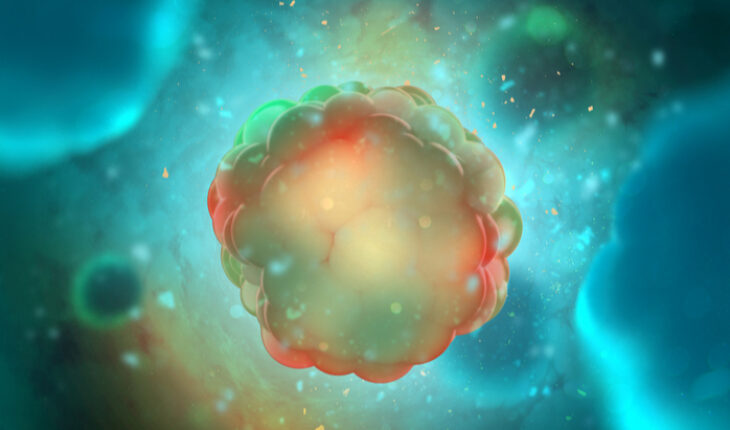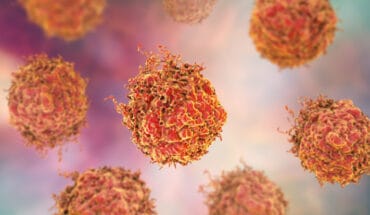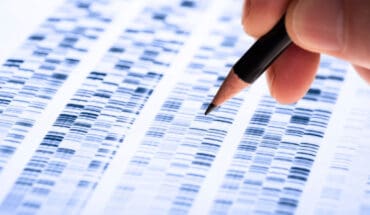Pioneering work by researchers from the School of Biological Sciences at Edinburgh University reveals how invisible triggers orchestrate the earliest-known stages of a key life process, and may help offer clues to improving ways of treating diseases such as cancer.
As part of the processes of renewal and repair that keep our bodies ticking over, new cells are made in their millions inside each of us every day through cell division.
Despite being one of the most fundamental processes in the biological world, the inner workings of its earliest-known stages have remained shrouded in mystery.
A team led by Professor Bill Earnshaw and Dr Georg Kustatscher have used pioneering techniques to shed light on the first steps taken inside cells as they begin to divide.
“Our study offers a glimpse into the never-before-seen first stages of cell division,” says Professor Earnshaw. “It’s a process that’s essential for all plant and animal life on Earth, but there’s still so much about it that we don’t fully understand, particularly what happens right at the start.”
All of people’s genetic information is arranged into 23 chromosomes inside their cells. As well as DNA, chromosomes also contain protein molecules – lots of them. In cells that are not dividing, the proteins move dynamically on and off DNA to perform and regulate a whole host of functions, from controlling which genes are turned on or off to repairing damaged sections of DNA. The role that many of these proteins play in the first stages of cell division is less clear.
When a cell divides, its chromosomes need to be carefully packaged into compact parcels to ensure they are split equally between the two new cells that are created. Each chromosome is first replicated before the division process starts. Only when replication is complete does what resembles a spaghetti-like jumble of threads compacts into rigid, X-shaped rods at the centre of the cell. As the cell begins to split in half, a scaffolding of tube-like structures allows molecular motors to drag a copy of each of the 23 chromosomes into the two newly forming cells.
But this doesn’t always go smoothly, as Kustatscher explains: “When millions upon millions of cells are dividing, some mistakes will inevitably happen. Errors can lead to new cells that have too many or too few chromosomes, a feature known as aneuploidy. When it happens in embryonic cells aneuploidy is usually fatal, but it’s also a common hallmark of .”
A better understanding of precisely how chromosomes are packaged and moved into new cells – and the role that proteins play in this – could offer important insights into what may be a key feature of a number of diseases, says Earnshaw.
To investigate this further, Earnshaw devised a method that would enable them to shed light on the very first stages of cell division.
A big challenge to studying cell division is that, at any one time, cells in a lab petri dish will be at various stages of the division process. This makes it very difficult to analyse what is happening at specific points in the process.
Earnshaw’s method, developed by his Japanese associate, Dr. Kumiko Samejima, involves genetically engineering chicken cells – which undergo a very similar division process to people – so that the start of cell division can be blocked using a drug. As soon as the drug is removed, cells begin dividing in a rapid and perfectly synchronised way.
This allowed the researchers to use a powerful analytical machine, called a mass spectrometer, to detect which proteins were bound to chromosomes at the very start of cell division, and how these changed during the first 25 minutes of the process.
They tracked 2,500 of these proteins and found that hundreds drop off chromosomes because their functions are not needed during cell division. At the same time, other proteins move across the cell and attach to chromosomes, as they prepare to be pulled apart into the new-forming cells.
“What our results show is that by the time you can see under a microscope that the process of packaging chromosomes has begun there have already been thousands of changes in the proteins that attach to them,” says Professor Earnshaw.
The team has developed an app to help researchers studying the proteins they have identified and gain new insights into their involvement in cell division. This, in turn, may reveal more key details about the precise mechanisms behind the earliest stages of the process.
The hope is that it could open up a new frontier of research on cell division, and ultimately help facilitate the development of new therapies for diseases characterised by errors in the process, Earnshaw says. “Being such a fundamental process, cell division is implicated in a wide range of medical disorders in one way or another. By developing a resource for other scientists to use and build upon, we hope our work can act as a focal point for researchers around the world to collaborate to further unpick cell division’s inner workings.”
Their research, which is published in the journal Molecular Cell, was funded by Wellcome. An open access version of the paper is available: Mapping the invisible chromatin transactions of prophase chromosome remodeling
- Gut microbiome could delay onset of type 1 diabetes - 3rd April 2025
- The da Vinci 5 Robot Is Set To Transform Bariatric Care: - 31st March 2025
- Beyond money: the hidden drivers fuelling child food insecurity - 31st March 2025






